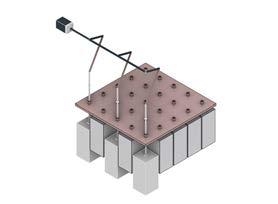Facade reverse logistics
BT-Bundle |2020
If the Netherlands wants to achieve its goal of being completely circular by 2050 (Berkel, Delahaye, & Faasdreef, 2019), radical solutions must take place. Implementing a circular economy is a challenge, but it proves to be significant given the rate at which resources are being consumed.
MacArtur, 2017) is one of the pillars of circularity, which is what reverse logistics might address. The current research analyses the existing conditions, applied to a specific product, and then proposes a product and strategy redesign to facilitate a reverse logistics process.
Designing is one of the most important tasks to achieve the circular agenda. The design process has a significant weight in the repercussions a project might have in the environment. Even though such design only refers to the architectonic or product design, the current research takes it a step further and also envisions strategic design. Reverse logistics is a vital component of the circular economy, as it would solve major loopholes and answer the questions that are currently being asked. Understanding the market and having a clearer picture of the behaviour of the materials is vital to assess the current situation and the solutions to be proposed. As mentioned by the Ellen MacArthur Foundation, “thinking of systems� (Ellen
The general objective is: to develop a framework that is useful to analyse current construction practices and that also helps identifying possible solutions, both at product and system level, facilitating the implementation of reverse logistics in the façade industry. At the end, a framework that organizes RL is proposed as well as a theoretical basis for DfRL, Design for Reverse Logistics, considering the steps needed to facilitate RL. An application of both formats is performed in a specific case, the CITG building facade panel, and an eventual design exercise is made. Universal panel solutions are proposed, a configuration that will allow interchangeability between products.
TOP: Proposed graphical assessment
Name Graduation year Tutors
BOTTOM: Proposed product design, result of theoretical findings
Javier Jair Montemayor Leos 2020 Tillmann Klein, Bob Geldermans & Juan Azcarate 21













